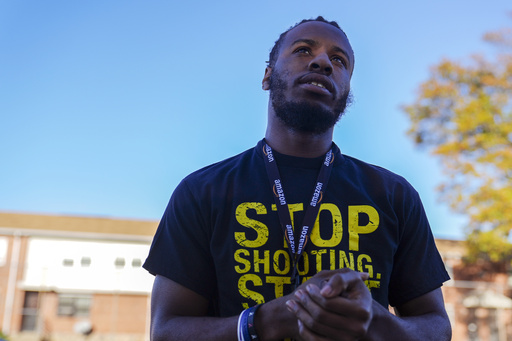
BALTIMORE – Following a troubling history of gun violence, a neighborhood in Baltimore’s southwest region is rejoicing in an impressive milestone: the absence of homicides for more than a year. This achievement is particularly significant for the Brooklyn community, which experienced a tragic mass shooting during a summer block party in July 2023 that resulted in two deaths and left 28 injured, predominantly young individuals, in an aging public housing area.
In the wake of this horrific event, Baltimore’s key anti-violence initiative, Safe Streets, intensified its efforts in the neighborhood. City officials attribute this boost in community vigilance and engagement to the noticeable drop in violence. On Tuesday, local residents and officials convened at the site of the mass shooting to commemorate a year of progress and recovery.
“This isn’t just a Safe Streets success; it’s a reflection of Brooklyn’s strength and the impact of community collaboration,” stated Baltimore Mayor Brandon Scott. “This is a community that has faced neglect and disinvestment for far too long. Together, we are declaring that enough is enough.”
Across Baltimore, homicide rates have declined by approximately 24% compared to last year, building on a roughly 20% decrease in 2023. This marks the first time in nearly a decade that the city recorded fewer than 300 homicides, marking an end to an increase in violence that began in 2015, following the tragedy of Freddie Gray’s death and the resulting societal unrest.
The issue of violent crime is also shrinking on a national scale after a notable surge during the COVID-19 pandemic.
Established in 2007, the Safe Streets program operates 10 offices in some of Baltimore’s most dangerous areas. It has expanded its reach in recent years under Mayor Scott’s leadership, which has positioned violence as a public health crisis and sought to address its foundational issues.
With a focus on conflict de-escalation, Safe Streets employs mediators who possess credibility and understanding of the local environment. The work is inherently risky, as these mediators foster relationships with at-risk individuals, aiming to prevent them from becoming either victims or perpetrators of gun violence. Reaching out to young community members is identified as a crucial strategy.
Adanus Sprillium, a 22-year-old resident, recently joined a job readiness program suggested by Safe Streets workers in Brooklyn, attended his first GED class last week, and reflected on how these resources made a difference in his life. He voiced how difficult circumstances like addiction and homelessness once loomed over him, stating, “I probably would’ve ended up being dead or in jail.”
A community survey conducted shortly after the Brooklyn tragedy indicated that many residents of the neighborhood trusted Safe Streets more than the Baltimore police, local educational institutions, and other organizations, with only local churches receiving higher marks.
Despite their presence during the block party, Safe Streets workers could not prevent the event from descending into violence. The police department faced significant backlash regarding their response, as a report highlighted potential biases, noting that officers overlooked several warning signs and failed to act in the critical hours preceding the outbreak of violence. Some community members questioned whether the police response might have differed had the event occurred in a wealthier neighborhood. As a result of the investigation, disciplinary actions have been initiated against several officers.
In connection with the July shooting, five teenagers were arrested, with four ultimately pleading guilty to various offenses.
Sean Wees, who directs the Safe Streets operation in Brooklyn, emphasized that many team members have strong ties to the community. In response to the mass shooting, the initiative has focused on reinforcing safety and connecting locals to essential services. Yet, Wees acknowledged that extensive work remains to be done.
“We are dedicated to fostering peace and progress here in Brooklyn,” he expressed during the Tuesday ceremony. “Our mission continues until events like this celebration are unnecessary — until safety becomes the norm rather than a fleeting reality measured in days or months.”
